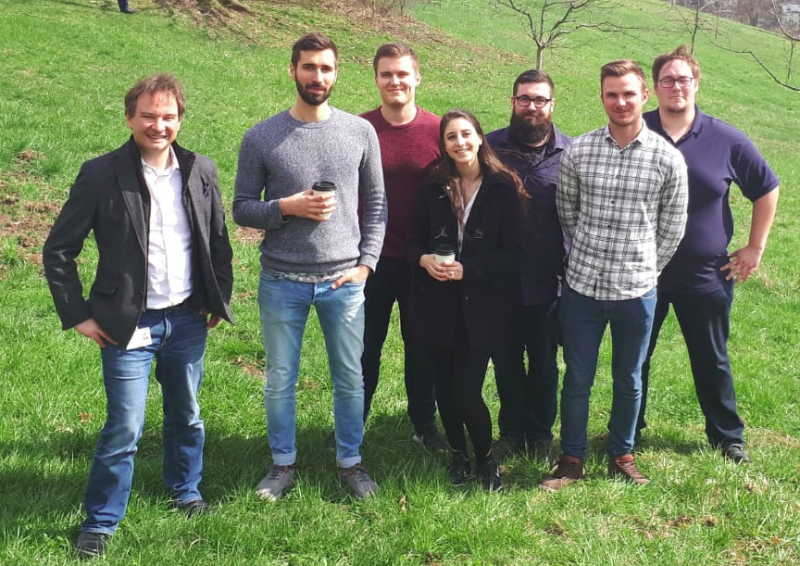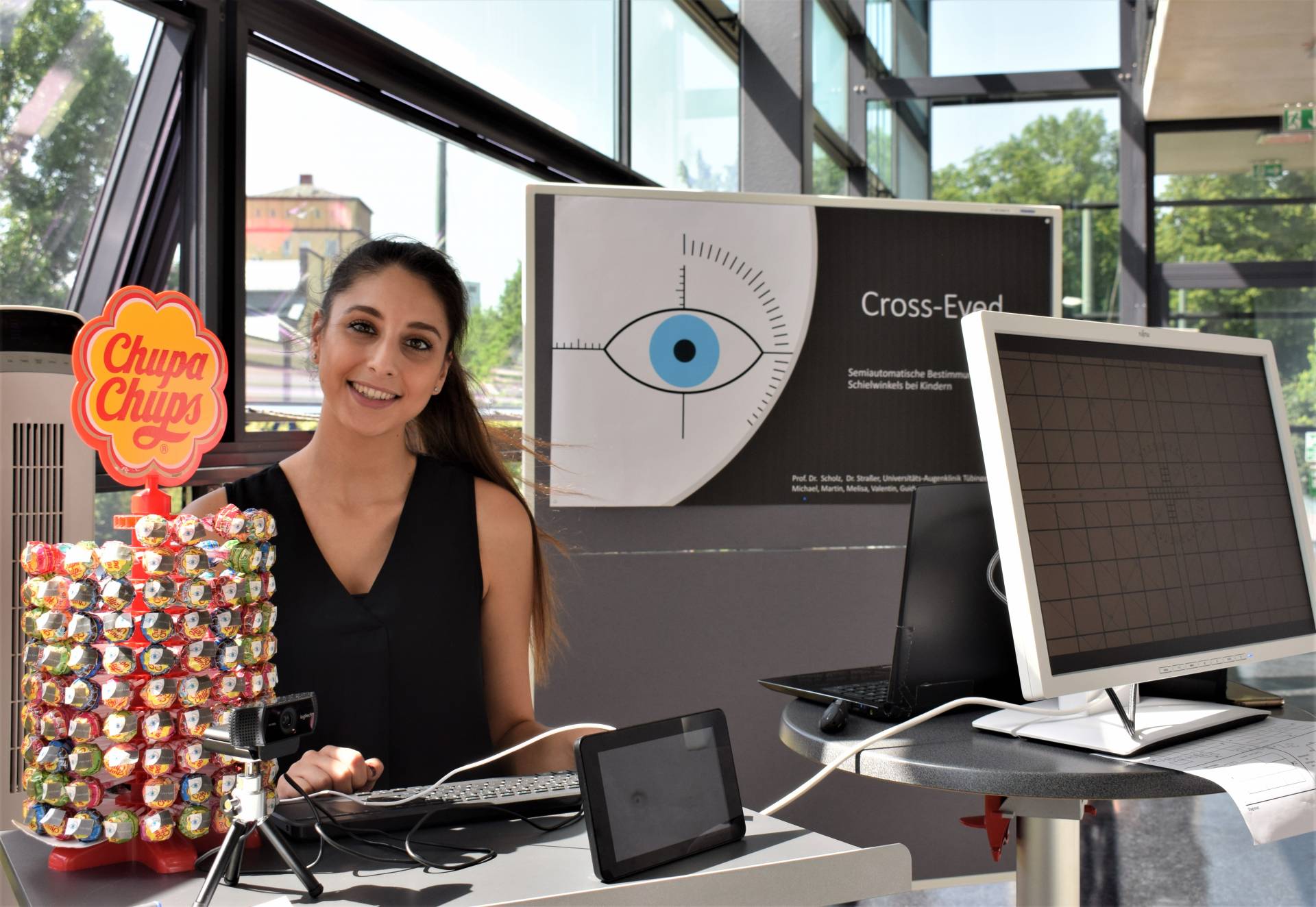
Semi-automatic determination of the squint angle in children

Project description
The tangent table according to Harms is a common method for measuring the motility of the eye, which is described in many ophthalmological textbooks.
In this method, the patient usually sits at a distance of 2.5 metres in front of a tangent table. A red glass is held in front of the fixating eye; the patient can now only see the fixation light with this eye, everything else is dark. The patient is given a green light pointer whose light spot can only be seen with the eye without the red glass. A lamp is attached to the patient's forehead, which projects a cross onto the tangent board. This position cross makes it possible to check the head position. Head tilts and head constraints can be detected in this way.
The patient should now always fixate on the red light and try to point to this light with the green light pointer. In order to localise the red light spot in the room, the patient must look at it with the eye that is not fixated, as they cannot perceive the surroundings with the other eye, which is covered by the red glass.
In the brain, the image of the red light spot on the retina of the fixating eye and the green light spot on the retina of the other eye, which is very similar in direction, are then superimposed according to the principle of confusion. If one eye deviates or the fixation lines of both eyes do not intersect at the object point (in this case the red light), the patient will point with the green pointer next to the red light. This means that during the examination, the green dot indicates which point the squinting eye is looking at.
The horizontal and vertical squint angles can be deduced from the deviations. Squint angles can be measured in different, precisely defined directions of gaze. This is done by turning the patient's head. If you want to measure the squint angle when looking 15° to the right, the patient must turn their head 15° to the left.
Involved persons
Guido Saller, Martin Hintersberger, Philipp Maier, Michael Göbel, Valentin Mok, Melisa Cirakman, Ivan Rosen Antov, Edonit Shkodra
Supervisor and Cooperation Partner:
Dr. Torsten Strasser
Prof. Dr. Jürgen Scholz
Uni Tübingen



